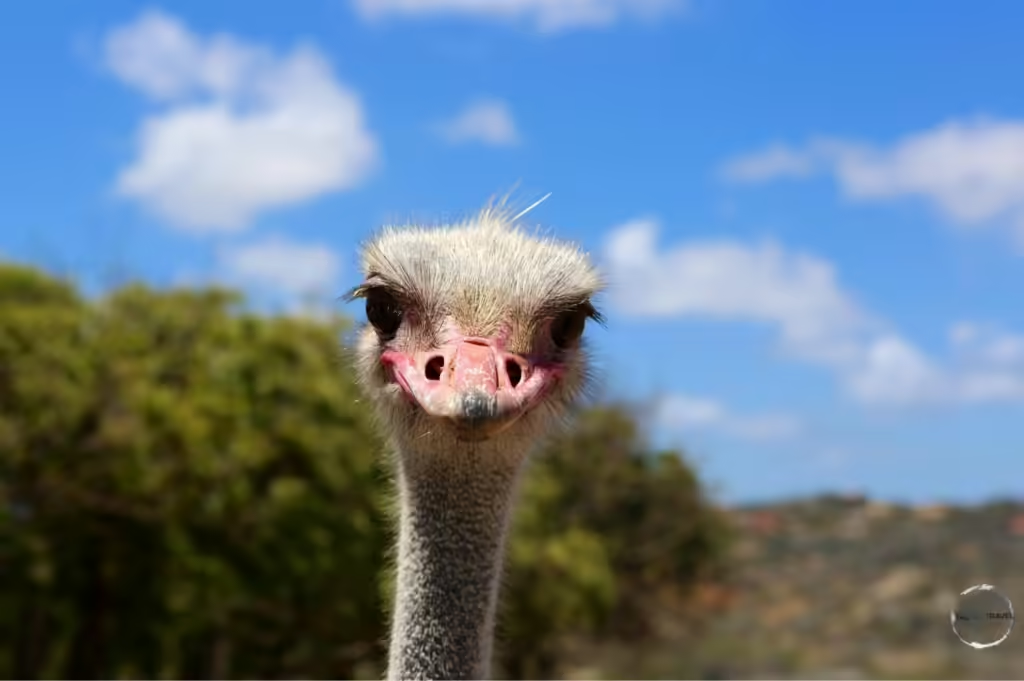Aruba Travel Guide
Welcome to the taste2travel Aruba Travel Guide!
Date of Visit: March 2015
Introduction
Aruba has branded itself “One Happy Island”. The island lies just north of the coast of Venezuela, and is one of the three ‘ABC’ islands (Aruba, Bonaire & Curaçao), which are all former Dutch colonies and are now part of the Dutch Caribbean.

An Aruba party bus.
A tourist haven, which is especially popular with American vacationers, the west coast (on the leeward side) is home to fine white, sand beaches and many large resorts. The east coast (on the windward side) is less popular due its exposed position with few sandy beaches and rough seas with treacherous currents.

The flag of Aruba.
The year-round temperature is almost constant at about 27°C with little rainfall. Aruba lies outside the Caribbean hurricane belt, making it the perfect playground for the sun-worshipping tourist.

The inviting white sands of Eagle beach, Aruba.
Location
Part of the ABC islands, along with Curaçao and Bonaire, Aruba lies 113 km (70 mi) to the west of Curaçao, and 189 km (102 mi) to the west of Bonaire.
A flat, dry, arid island (there are no rivers), Aruba is the 2nd smallest of the ABC islands (after Bonaire), being 30 km in length and 9 km wide at its widest point.

Turks Head Cactus, Aruba.
Sightseeing
Oranjestad

Dutch-style architecture in downtown Oranjestad.
The capital and largest city on the island, Oranjestad (English: Orange Town) was built around Fort Zoutman shortly after it was built in 1796. The city was named in 1820 after King William I of the Netherlands. The compact city centre is a pleasant place to stroll and can easily be covered in half a day.

The flag of Aruba flying in downtown Oranjestad.
The port is able to accommodate three mega cruise ships at a time. This delivers up to 15,000 day-tripping tourists into the city of 35,000. Not surprisingly the main activities in the city are duty free shopping.
When ships are in town the crowded downtown area is best avoided.

The Dutch-style Town Hall (Stadhuis) in Oranjestad.
My favourite cafe in Oranjestad is De Suikertuin located at Wilheminastraat 64. This is a Dutch cafe offering a very good breakfast and lunch menu and excellent coffee.

The perfect cage, with the door always open, in the garden of ‘De Suikertuin’ cafe in Oranjestad.
Arikok National Park

Arawak cave paintings inside Fontein Cave.
The Arikok National Park takes up approximately 18 percent of the island and was one of the highlights of my visit. You should allow half a day in the park. The best way to see the park is with a hire car or by joining a local tour.

A view of Fontein cave, Aruba.
Inside the park are some of the island’s oldest Arawak cave paintings, which can be seen inside Fontein Cave.

Indigenous Aruban whip-tail lizard
Some of the most visible of all the wildlife on the island are the lizards. The Aruban Whip-tail lizard can be seen in the National Park and elsewhere on the island.

Wind turbines at the Vader Piet Wind Farm.
Beaches
Most visitors come to the island for one reason – the white powdery sand beaches. They mostly stay in the big resorts that are concentrated in one small area of the island from Palm Beach to Eagle Beach (featured on the main photo).
At the southern end of the island is Baby beach, which is situated in a protected cove and offers good snorkeling.
At the northern end of the island is Malmok beach, which is located in a residential neighbourhood and also offers good snorkeling.

Eagle Beach is one of the most inviting beaches on Aruba.
Hiring snorkel gear on the island is not easy. Most resorts and hotels will lend equipment to their guests but do not rent. I found an aquatic shop on Eagle beach, which allowed me to hire gear, otherwise your only option is to purchase your equipment from a local dive shop.
The beaches on the windward side of the island are not protected and as such are exposed to fierce weather, strong currents and have mostly rocky shorelines.
Accommodation
This tourist haven is loaded with accommodation options catering for all budgets, from the huge five-star resorts strung along the white sand beaches of Palm Beach and Eagle Beach to hostels in downtown Oranjestad.
High season prices apply from December to April.
I stayed inland at Paradera Park Apartments, which I would recommend for those who wish to self cater.
Best to book ahead using an online agent such as booking.com
Eating Out
There are lots of restaurants around the island, especially in the beach-side resort areas of Palm Beach and Eagle Creek. In these areas you will find many American chain restaurants such as Hooters, Hard Rock Cafe etc.
Due to the presence of ostrich farms on the island, ostrich meat is also available.

A curious ostrich at the Aruba Ostrich farm.
Visa Requirements
Some nationalities require visas for Aruba – check your visa requirements prior to arrival.
Getting There

Interior view of my Insel air flight from Manaus to Aruba, on which I was one of just two passengers.
By Plane
Flights into Aruba arrive at Queen Beatrix International Airport (IATA: AUA), which is located on the coast, 3 km south of Oranjestad. The airport serves as a hub for Aruba Airlines.
AUA has flight services to the United States, most countries in the Caribbean, the northern coastal countries of South America, Canada and some parts of Europe, notably the Netherlands. The airport offers US Border Pre-clearance facilities with American tourists accounting for 55% of all arrivals.
The following airlines provide scheduled services to/ from AUA:
- Air Canada – flies to/ from Toronto–Pearson
- Air Century – flies to/ from Santo Domingo–La Isabela
- American Airlines – flies to/ from Charlotte, Dallas/Fort Worth, Miami, New York–La Guardia, Philadelphia
- Aruba Airlines – flies to/ from Bonaire, Curaçao, Las Piedras, Maracaibo, Miami, Valencia
- Avianca – flies to/ from Bogotá
- Conviasa – flies to/ from Caracas, Las Piedras
- Copa Airlines – flies to/ from Panama City
- Delta Air Lines – flies to/ from Atlanta, New York–JFK
- Divi Divi Air – flies to/ from Curaçao
- EZAir – flies to/ from Bonaire, Curaçao
- JetBlue Airways – flies to/ from Boston, Fort Lauderdale, New York–JFK
- KLM – flies to/ from Amsterdam
- LATAM – flies to/ from Colombia Bogotá
- LASER Airlines – flies to/ from Caracas, Maracaibo
- Sky High Aviation Services – flies to/ from Santo Domingo–Las Americas
- Southwest Airlines – flies to/ from Baltimore, Fort Lauderdale, Houston–Hobby
- Spirit Airlines – flies to/ from Fort Lauderdale
- Sunwing Airlines – flies to/ from Toronto–Pearson
- Surinam Airways – flies to/ from Miami, Paramaribo
- TUI fly Netherlands – flies to/ from Amsterdam
- United Airlines – flies to/ from Chicago–O’Hare, Houston–Intercontinental, Newark
- WestJet – flies to/ from Toronto–Pearson
- Winair – flies to/ from Curaçao, St. Maarten
- Wingo – flies to/ from Bogotá
Airport Transport
From the airport, taxis are available to any point on the island.
If you wish to take a bus downtown you can do so at the bus stop on the main road outside the airport. Bus services on the island are provided by Arubus.
By Sea
There are no scheduled ferry services connecting Aruba to any other island. The only way to arrive by sea is by private yacht or cruise ship.
All cruise ships dock at the busy cruise ship port in downtown Oranjestad, a modern facility which can accommodate up to five ships at a time. The current Cruise Ship schedule is available here.
Getting Around

My rental car on Aruba.
Bus services on the island are provided by Arubus, however the network is not very comprehensive and does not cover the remote parts of the east coast.

The license plate on my Aruba rental car.
The best option for exploring the island is to hire a car. The island can be covered in a day if you rushed around but at a more leisurely pace would require 2-3 days.
Safe Travels!
Darren
Follow me on Instagram:
[instagram-feed feed=1]
Further Reading
Other travel reports from the Caribbean region include:
Aruba Travel Guide Aruba Travel Guide Aruba Travel Guide Aruba Travel Guide



































